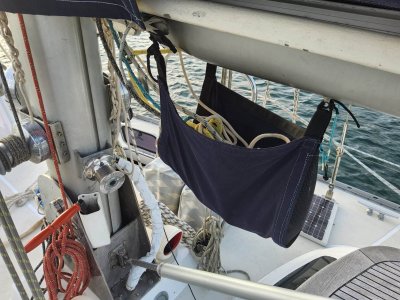PabloPicasso
Well-known member
We have reefing lines in the boom. They exit underneath at the forward end of the boom below the gooseneck.
Sometimes they end up in a mess on the deck at the foot of the mast, which is a nuisance.
How do folks keep their reefing tails neat by the mast. Do you use a bag, cleat them off, or another method??
Sometimes they end up in a mess on the deck at the foot of the mast, which is a nuisance.
How do folks keep their reefing tails neat by the mast. Do you use a bag, cleat them off, or another method??

